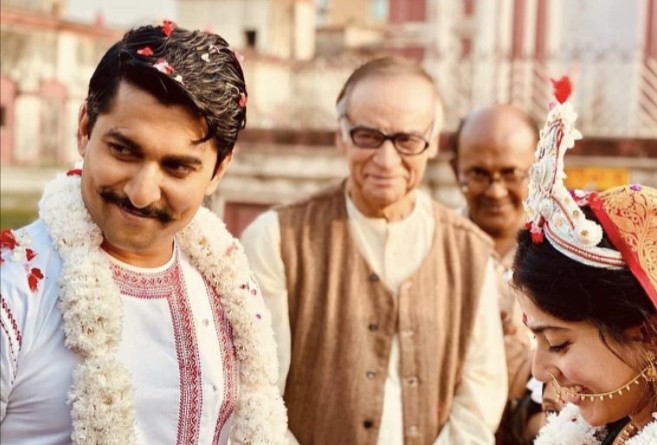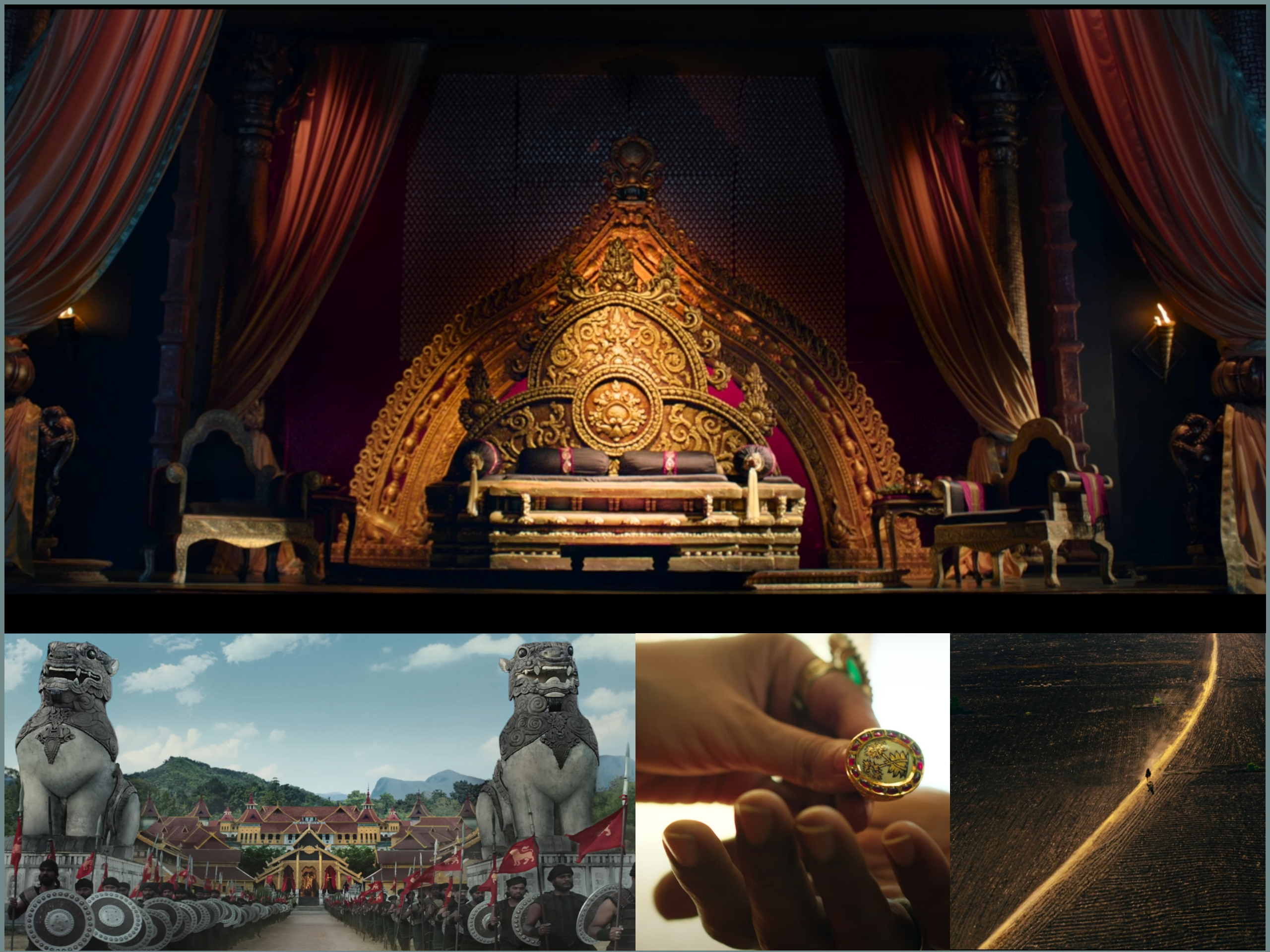Thoughts on Shyam Singha Roy (2/2)
Shyam Singha Roy - An Imperfect Reincarnation
It is in the flashback portion where the film really takes an enormous leap in terms of its presentation. The storyline of Shyam and Rosie’s relationship is itself capable of an entire film (case in point Mani Ratnam’s Dil Se). Especially the Song and Dance sequences create a Bhansali style dance form choreography by Kruthi Mahesh and Yeshwant. The Orffian Chants and Plaintive Veena (and a countless number of other traditional Hindustani Instruments) just cut through the ethereal silence in the temple as Shyam looks at a distance towards (Maithreyi) a dance formation being broken and again remade into another, and the song Pranavaalaya is sung. In a word, the songs in this movie, especially the ones in the flashback are unskippable for their layered audio-visual quality.
But
there are several bones to pick even in the resourceful second half.
Resourceful because of - The Bengali
Revolutionist set-up (Nani makes
this difficult role look like a cakewalk) against the Devadasi system. A strange,
beautiful (or strangely beautiful) dancer who doesn’t have the luxury of
freedom. A toxically orthodox society along with the narrow-minded Singha Roy Family. The revolutionist Shyam Singha Roy who is unhesitant in strongly believing in
atheism (in the 70s) and firmly states that the Pen is mightier than the sword,
has a character arc worth remembering again and again. The consistency with
which Shyam Babu is written and played by Nani deserves
a special mention to the writer Satyadev
Janga along with Rahul Sankrithyan.
The
element of fire gets beautifully conveyed in fine touches by the Director. The
fire can mean Shyam’s revolt or romance. No matter which one it
chooses for as fuel, the fire rises to ultimately engulf the demon who stands for the patriarchy. The same fire gets used to light up diyas in
the temple by Maithreyi as well as to smoke a joint by Shyam.
Notice the first time when Shyam takes Maithreyi out for a ride, he lights up a cigarette in the dark
whereas Maithreyi stands fully drenched in yellow from the lights of
the temple. For Shyam, fire, just like religion, is a petty feature,
which need not seek his life’s complete dependence. Maithreyi still doesn’t have either the courage or the belief
to step out and walk in the dark with Shyam.
For her, fire and its illumination, just like religion, is an essential element
in her livelihood. Even after she gets her redemption from the Devadasi System, she finds comfort only in light – this is shown by the sun’s
rays which hit their Calcutta residence’s open balcony early in the morning.
Signifying that the natural light, in contrast to artificial light produced
from burning the wick in a Diya, has naturally and organically built the courage
and instilled hope in her.
Her
hope and His fire get fully dowsed in the climactic scene where Shyam gets
killed by his twin brothers. The sky starts pouring as Shyam is
completely down on the ground, laying flat with his finger extending out for a
promise to be fulfilled. The starting point of rift also originates from water
as he washes his hands abruptly in his platter stating - “Naa Bhojanam Ayipoyindi”. The beauty in the line is, he almost says – “Naa Pelli Ayipoyindi”, which acts as a heavier meaning underneath the
simple act of disrespect he has shown.
The
bones to pick is the unexplored plight of Maithreyi/Rosie. The character required equal, if not greater
definition in terms of a mysterious woman, a caged dancer to whom Shyam falls
for at the very first sight. When Shyam calls her out for a small, casual trip around the
town, she rushes into the temple without a word spoken. Just before the doors
are closed, she looks back at him in a sort of opportunistic, yet regretful
manner, surprised at the request the man has made. Just like how Meghna looks
at Amar in the first half of Dil Se.
There
are also other elements that felt it could’ve formed into a
full-blown subtext of the film. If we look at the Singha Roy family, especially the brothers – Shyam and Debendra (along
with his twin brother) fall on the opposite side of the scale. While the former
is an unhinged atheist, the twins are conformists and hardcore believers of
God. In between, them is Manoj, who comes out as a sort of agnostic. Not able to
decide whether god exist. Not able to decide which side to choose. That’s why
he lives with the twins and talks lovingly with Shyam as
he can’t do both with the same entity. Manoj Singha Roy could’ve been a litmus test or a mode to Rosie’s acceptance
into the Singha Roy’s family. A Drama between Manoj and Rosie would
have been interesting to watch.
In
addition to this is the restricting dialogues by Rahul Sankrithyan. His rich vocabulary does add authenticity and
ensured objectivity but killed the silent moments in the film. Rather than
focusing entirely on the dialogue to convey the meaning, the characters, who were
given enough traits to explore visually, could have been greatly utilised. Their underutilization was extremely
noticeable and striking in the scene where Shyam and Rosie are
solaced and cut off from the world for a few minutes as they trip across the
river through a boat, at midnight. The conversation should have felt a bit
spontaneous, a bit awkward, but what comes out is a well-defined set of QnA along
with eloquent poetry describing this unreadable woman who is sitting in front of Shyam.
The playfulness and childish reactions are never captured, though for a moment
both of them look at each other with a childlike curiosity.
The
biggest disappointment I had with the film was the final twist which comes in
at the right time, as Duos Ex
Machina and provides strong
evidence that Vasudev is free from any copyright infringement. But why
choose a man like Vasudev? Who is never a Struggling filmmaker, Who is borderline selfish (that
his film should be made, not that good films should be made – which might’ve
been the case if Shyam was born today) and Who is hardly a good friend. The
question Why him? needn’t be asked if Vasudev was
better written. And the only answer that’s never told but is clearly evident is
that he holds a strong facial resemblance to Shyam Singha Roy.
If
that’s really the only reason that’s left to justify such a happy go lucky man selected as a re-embodiment of polarly opposite
persona who was concerned about rectifying the flaws in the society,
then I cannot buy into this movie as I bought into several other simpler movies last year. Shyam Singha Roy had an imperfect reincarnation and required greater
polish on its script than the walls of its sets. But making me write this long
and difficult to read 2 part article about it, is itself a big win for the movie's
strong Bengal portion. This is the reason why I mentioned Shyam Singha Roy in honourable mentions of #BestTeluguFilms2021.





Comments
Post a Comment